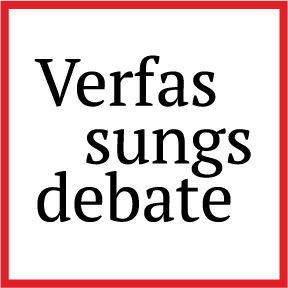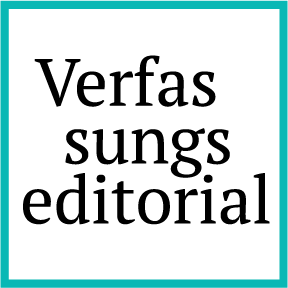Neutralising the Captured Court
Case AW ‘T’ and Its Impact on Polish Judiciary
In September 2025, the CJEU ruled in the AW ‘T’ (C-225/22) case on the status of decisions issued by the Chamber of Extraordinary Control and Public Affairs of the Supreme Court in Poland (“Chamber” or “Chamber of Extraordinary Control”). Already in its previous case law, in L.G. v KRS, the Court found preliminary references from that Chamber to be inadmissible on the grounds that the Chamber could not be considered an independent court established by law. Moreover, in the W.Ż. case, the Court had already considered certain decisions taken by irregularly appointed judges in Poland as “null and void” under certain conditions. However, the new AW ‘T’ case broadens the applicability of the “null and void” sanctions. It establishes that, when lower courts are re-examining earlier cases resulting from decisions of the Chamber of Extraordinary Control, these decisions must be regarded as “null and void” to ensure the primacy of EU law. Henceforth, the AW ‘T’ decision will be of great importance for the Polish judiciary and for efforts to address the consequences of the rule of law crisis.
Crossword puzzle magazines in the eye of the rule of law storm
The case AW ‘T’ concerns a competition dispute involving crossword puzzle magazines. It was initially resolved by a final judgment in 2006 and partially amended in 2010 following a kasacja, an appeal to the Supreme Court, filed by one of the defendants. In 2021, the newly established Chamber of Extraordinary Control set aside the 2006 judgment as a result of an extraordinary appeal submitted by the Prosecutor General (who also served as Minister of Justice). The case was then referred to the Appeal Court in Kraków for re-examination. Due to all legal doubts surrounding the status of the Chamber of Extraordinary Control, the case was referred to the CJEU, drawing on case law from the ECtHR (Dolińska-Ficek and Ozimek v Poland) and the CJEU (W.Ż.).
It is not the first time that the CJEU has discussed the status of this new Chamber of the Extraordinary Control. In Commission v Poland (C-204/21), the Court ruled that the Chamber’s exclusive powers to assess the legality of domestic courts’ composition are incompatible with Article 19 TEU. Meanwhile, the ECtHR found (Dolińska-Ficek and Ozimek v Poland) that the Chamber does not constitute an independent court established by law. Consequently, the CJEU implemented the ECtHR case law in the L.G. v KRS (C-718/21) and ruled that the Chamber cannot be considered an independent court established by law.
In AW ‘T’, the CJEU followed its findings from L.G. v KRS and stated that even the presence of a single judge in the Chamber’s panel, appointed in the same circumstances as in L.G. v KRS, “is sufficient to deprive that body of its status as an independent and impartial tribunal previously established by law” (para. 57). As a result, the fact that judicial decisions issued by bodies that do not adhere to the standards under Article 19(1) TEU, cannot not be disregarded (para. 53).
Fruits of a poisonous court
The CJEU already discussed the validity of the decisions of Supreme Court judges appointed after 2018 by the “new” National Council for the Judiciary (NCJ) in the W.Ż. case. Accordingly, in the W. Ż., the Court ruled that such decisions must be declared to be “null and void”. There were, however, numerous additional conditions attached in order to apply this sanction. First, there were particular facts of that case: it concerned the recusal of judges in the Chamber in a case concerning challenging the transfer of a judge without his consent; the proceedings were before the court of last instance; and the decision in question was issued by a single-judge panel. Second, it was up to the referring court to assess whether judicial appointment took place “in clear breach of fundamental rules”. Third, the domestic court had to assess whether the integrity of the outcome of such court proceeding is undermined. Fourth, applying “null and void” sanction had to be “essential in view of the procedural situation at issue in order to ensure the primacy of EU law”. Mańko and Tacik considered W.Ż. to be “a landmark case comparable with the seminal Portuguese Judges ruling where Article 19(1) TEU was first operationalised as a tool to protect judicial independence”.
W.Ż. was one of the main sources of inspiration for Advocate General Spielmann, who in his Opinion on AW ‘T’ found that W.Ż. “cannot be understood to mean that any act adopted by a national judicial body that does not have the status of a tribunal previously established by law should be considered legally non-existent” (para. 73). For Advocate General Spielmann, the full effectiveness of the judicial protection “must be achieved by (…) choosing an option from the ‘palette’ of consequences made available under national law” (para. 71). He supported this conclusion by reference to the YP case (C-615/20), in which the Court ruled on the possibility of “disapplying” the decision of the (captured) Constitutional Tribunal. For Advocate General Spielmann, decisions of the Chamber “should, at the very least, be disapplied” (para. 75). Hence, AG Spielmann arguably suggested a rather nuanced approach in assessing the validity of the Chamber’s decisions.
The Court took a different approach. Finding a decision of the Chamber “null and void” seems to be the only possible option to ensure the full effectiveness of Article 19(1) TEU (para. 67 and 69) and primacy of EU law (para. 68). The Court does not consider “disapplication” as an acceptable tool and suggests “stronger” solutions. This is a significant development compared to W.Ż., where the “null and void” sanction was equipped with reformulated conditions. For the domestic court to declare a decision “null and void”, the CJEU must declare that “a judicial body of last instance does not satisfy the requirements of independence, impartiality and previous establishment by law”. Moreover, finding decision to be “null and void” must be “essential in view of the procedural situation at issue in order to ensure the primacy of EU law”. Finally, the Court limited its conclusion to situations when “the case concerned is referred back to a lower court for re-examination”, yet it is much broader scope of cases that formulated in W.Ż.
It seems that AW ‘T’ moved beyond W.Ż., applying the “null and void” sanction in a more straightforward manner. At first glance, the wording “null and void” suggests a stronger sanction than mere “disapplication”, potentially carrying more foundational consequences for the decisions taken by the Chamber of Extraordinary Control. Moreover, the Court underlined that the aim of the “null and void” sanction is to ensure “full effectiveness” of Article 19(1) TEU, which is applicable in the “fields covered by EU law”. Nonetheless, it remains unclear whether the “null and void” sanction extends to situations not directly concerning implementation of EU law. It is worth noting that the “original” AW ‘T’ case pending before the domestic (referring) court did not “concern the interpretation or application of a rule of EU law being implemented at national level” (para 32). Does this mean that the “null and void” sanction, as framed in AW “T”, should apply to all decisions of the Chamber?
What does AW ‘T’ mean in practice?
The conclusion in AW ‘T’ is quite straightforward – the Chamber’s decisions should be declared “null and void” in order to secure the full effectiveness of Article 19 TEU. This allows EU law to neutralise, to some extent, the threat resulting from the existence of the captured “judicial” institutions. The CJEU adopted a similar approach with regard to the Constitutional Tribunal (YP case), despite the fact that infringement action regarding the Tribunal is still pending before the Court (Commission v Poland, C-448/23).
We will have to wait and see how domestic courts will apply the “null and void” sanctions. The verbatim wording of the judgment suggests that the CJEU made the “null and void” sanction available to lower courts re-examining a case as a result of a decision taken by the Chamber of Extraordinary Control. While the Chamber of Labour and Social Security of the Supreme Court has already applied the “null and void” standard expressed in AW ‘T’ case in its recent resolution, the leadership of the Supreme Court (“new” judges appointed after 2018) tried to undermine its meaning. This continuing ambiguities indicate that the judiciary is unable to solve the crisis systematically, due to, among other things, deep polarization among the judges, another side effect of the rule of law crisis.
One of the captured institutions, the National Council for the Judiciary, has already appointed approximately three thousand “new” judges, one third of all judges in Poland. There are almost seven hundred cases pending before the European Court of Human Rights dealing with their status and potential violation of Article 6 of the Convention. In Wałęsa v Poland, the ECtHR found that judicial appointments by “new” NCJ constitutes a systemic problem and directly suggested that introducing legislative amendments is crucial to healing the system, particularly to reinstate an independent National Council for the Judiciary.
In the AW ‘T’ case, the preliminary reference will allow the referring court to declare the 2021 “decision” of the Chamber “null and void” and restore the validity of the 2006 final judgment. This is a painful example showing that the depth of the rule of law crisis worsens over time. It is highly unlikely that any meaningful legislative amendments will be adopted by the end of the current Parliament’s term in 2027. In 2026, the term of the National Council for the Judiciary will expire. According to the law currently in force, the Parliament should elect 15 judges to the NCJ, which continues to be a problem. In light of Wałęsa v Poland, a central reason for systemic problems with judicial appointments in Poland was the selection of NCJ members by politicians, as such a process cannot guarantee the independence of the judges appointed by the NCJ.
FOCUS is a project which aims to raise public awareness of the EU Charter of Fundamental Rights, its value, and the capacity of key stakeholders for its broader application. Views and opinions expressed are however those of the author(s) only and do not necessarily reflect those of the European Union or the European Commission. Neither the European Union nor the European Commission can be held responsible for them.





